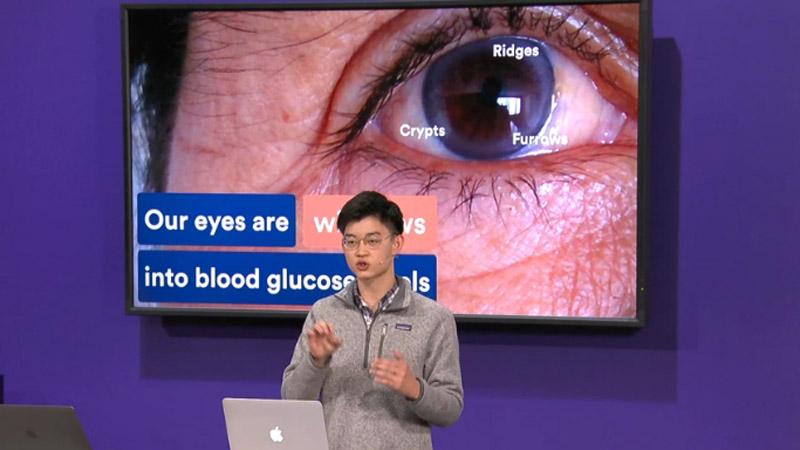A single student has 'solved' the problem of cheap, non-invasive glucose testing
Microsoft gives him a trophy and $100,000 as a 'well done'

US student Bryan Chiang appears to have done what several decades of big pharma investment, the billions in the Google innovation fund, Apple, and numerous failed medical start-ups haven’t managed: he's cracked the impossible problem of checking a person's blood glucose level without having to smear some actual blood on a sensor or poke a wire into the skin.
While there are some modern tech solutions to blood tests out there today in the form of continuous glucose monitors (CGMs), the costs start in the hundreds of pounds per month and they all require attachment to the body and access to its blood and fluids in some way to get a result.
A smartphone option that offers live glucose readings for a fraction of a cost – and no tubes, blood, patches or disposables – would be a genuine game changer for millions of people.
- The best fitness tracker of 2019
- The best health, diet and exercise apps for iPhone
- How AI is revolutionizing the health industry
This non-invasive dream has remained elusive due to the complexities in spotting blood glucose molecules through the barrier of our skin, with numerous failed schemes promising bloodless sci-fi test results before disappearing without trace, or at least not talking about their plans since 2014.
This includes the promising, but presumably still fictional, GlucoWise to quote but one example of a promised tech solution that has so far failed to materialize. But Chiang and his phone seem to have done it.
Hence Microsoft has handed its $100,000 (about £77,000, AU$144,000) 2019 Imagine Cup innovation award to Chiang, whose non-invasive EasyGlucose testing method appears to both exist and provably work.
It uses a custom lens attached to a smartphone to generate a high-res image of the eye for analysis, then via the mysterious modern tech salve methods of deep learning, neural networks and Chiang's own algorithm, accurately associates minor changes in the ridges and features of the iris in the human eye to the glucose levels within the bloodstream.
Sign up for breaking news, reviews, opinion, top tech deals, and more.

The crucial thing now is to match the claimed results to the hype. We saw Google literally pretend that it was possible to read glucose levels in tears a few years ago, but the smart contact lens project was quietly binned recently when medical development partners discovered that, er, it didn't work at all.
In fact, there's little-to-no correlation between eye fluid glucose and the body’s blood levels, making it useless for tracking the rapid glucose changes seen in the bodies of insulin injectors.
Why is glucose testing so important?
Regularly checking your blood glucose level is a critical part of managing diabetes, particularly the Type 1 variant, as it requires constant monitoring and insulin injections to manage glucose levels.
Go too low and you risk anything from wobbly hypos to sudden unconsciousness and fits; stay too high for too long and the reward is potential damage to the body and long-term complications.
That’s why more blood testing, more often, is advised to stay on top of these fluctuations, although when it involves making yourself bleed five or six times a day it’s not the most fun thing to do.
That’s why everyone with diabetes in their lives wants a non-invasive option; something that makes seeing what your blood’s on as easy as checking the time.
Microsoft says that EasyGlucose’s results at this early stage are within seven per cent of industry error norms, with 100 per cent of results falling within the 'clinically accurate' frame.
If Chiang's efforts are, indeed, true and replicable by clipping the $10 (about £7.50, AU$14.50) lens attachment on the five-year-old Huawei your mother's hoping to nurse through until at least 2022, it’ll be a rare, genuine case of some kid and a smartphone trapping, taming, and triumphantly riding home on one of the medical world’s longest-running unicorns.